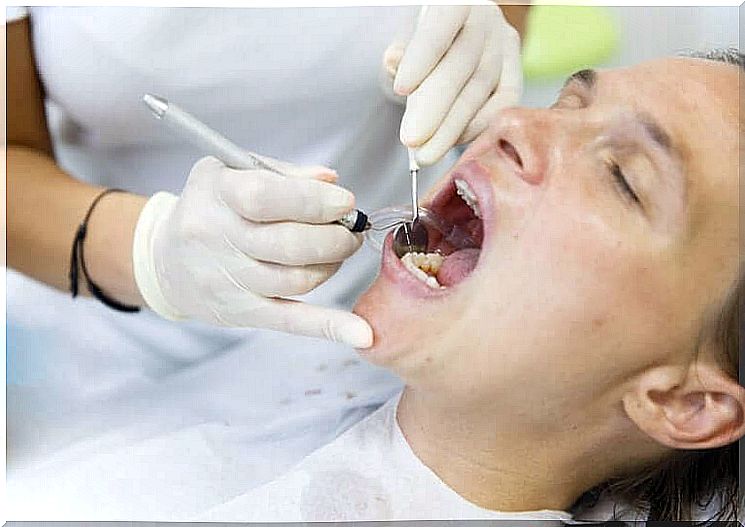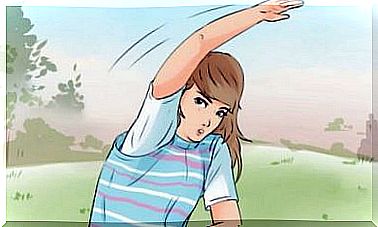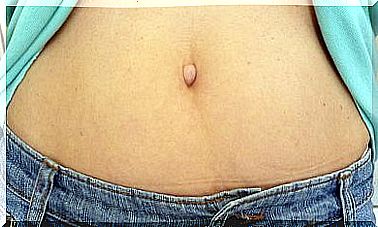Hyperdontia: Causes And Treatment
Hyperdontia is an excess of teeth in human dentition. It is estimated that around 3% of the population is affected. But what are the causes? And what treatments are available? We’ll tell you more about it in this article.

Refers hyperdontia as tooth majority. With this dental anomaly, the affected person has more teeth than normal. This means that there are more than 20 teeth in the deciduous dentition of children and more than 32 teeth in the permanent dentition of adults. It is estimated that between 2 and 3% of the population is affected by hyperdontia . Here in this article you will find out what exactly it is. In addition, we present the most important causes and treatments.
What exactly is hyperdontia?
As mentioned earlier, hyperdontia is the fact that the affected person has an excessive number of teeth. Most of these teeth are in the upper jaw. And here in particular in the area between the two canine teeth.
The most common form is the so-called “ mesiodense ”, which is located between the two upper incisors. In general, it is similar in shape to the neighboring teeth. But there are different types:
- Conical or conical.
- Molar-shaped, i.e. shaped like a molar.

These excess teeth can interfere with the eruption of teeth; either by occupying the space of other teeth in the dental arch, or by blocking the channels for tooth eruption. There are three types of hyperdontia:
- Simple: There is only a single surplus tooth here.
- Multiple: In this case, there are several surplus teeth. This is less common.
- Accompanied by other diseases: such as gownocranial dysplasia, Ehler-Danlos syndrome or cleft lip.
Causes of Hyperdontia
Dental anomalies that affect the number of teeth can be the “hyperdontia” discussed here. So an excess of applied teeth, or in a “hypodontia”. That means there are fewer teeth than normal. This can happen with both deciduous and permanent teeth. As mentioned above, we speak of hyperdontia when the number of teeth is more than the normal 20 in deciduous teeth and more than 32 in permanent teeth.
The exact causes for this are unknown. But it could be related to a genetic predisposition to hyperdontia not associated with other diseases. It is also assumed that excess teeth are caused by hyperactivity of the tooth bar during odontogenesis. This can have different causes:
- Local: So caused by infections, injuries, etc.
- General: Within this group there is hyperdontia, which occurs together with other diseases.
This excess number of teeth is more common in men, in a ratio of 2-1 compared to women. It is also more common in permanent dentition than in primary dentition.
How do you treat hyperdontia?
The diagnosis of hyperdontia is made through a radiological image. Clinical symptoms such as delayed tooth eruption, poor tooth alignment, tooth gaps, etc. can be recognized. The corresponding treatment must then be adapted to the respective form of the patient’s hyperdontia.

Removal of the surplus teeth
Removal of the excess teeth is usually recommended. Because this is how you want to avoid possible problems with tooth eruption or with the position of the teeth in the dental arch.
However, there is the problem that early removal in children can damage the root tips of the not yet fully formed neighboring teeth. Therefore, an investigation and analysis of the specific case should always be carried out to determine the best time to remove it.
Orthodontic Treatment
Additional orthodontic treatment is usually required after excess teeth have been removed. Because this way you can ensure that the tooth position is even and the space that was occupied by the surplus tooth is retained for the actual tooth.
Replacing another missing tooth with the surplus tooth
Sometimes it happens with hyperdontia that there is an excess of teeth on one side, but another tooth is completely missing on the other. The tooth to be found can have an unusual shape. In these cases, you can line up the surplus tooth to replace the missing one. Appropriate measures can be taken to give it the look you want. For example, a crown or a veneer.
Summary
When a person has more than the standard number of teeth it is said to have hyperdontia. The causes can be genetic. But other factors such as injuries can also play a role. The treatment chosen depends on the conditions of each individual patient. Therefore, it is necessary to conduct a full investigation and analysis on each case.









